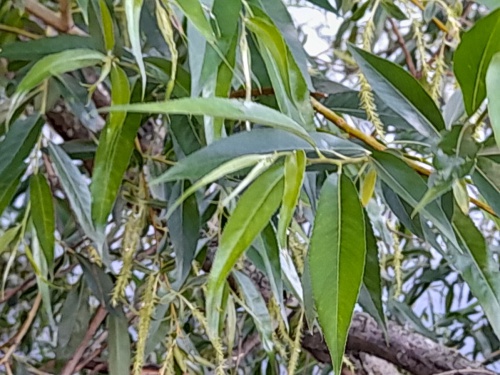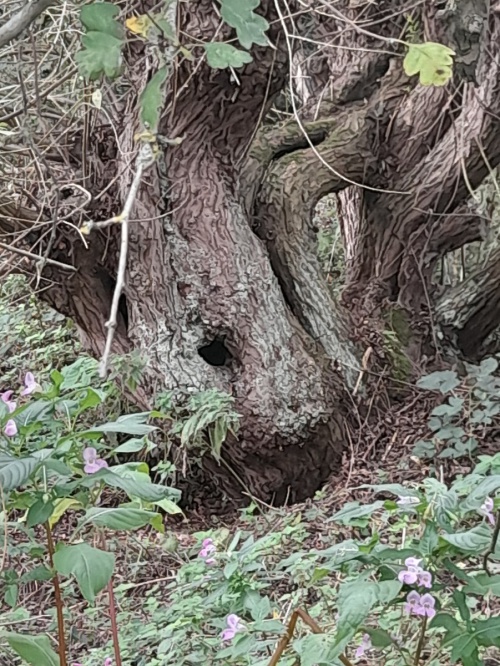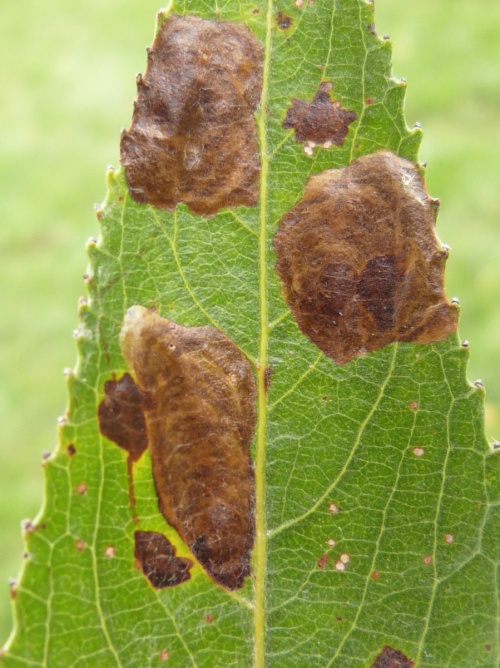Hybrid Crack-willow - Salix x fragilis
A robust tree, usually reaching 10 to15 metres high, its bark greyish and deeply fissured. Twigs soon glabrous and rather lustrous olive brown, brittle at the point of attachment to the branch. Mature leaves are lanceolate, 9 to 15 cm long and 1.5 to 3 cm wide, dark shining green above, greyish beneath, margins coarsely and unevenly serrate. Catkins appear with the leaves, terminal on short leafy shoots. Male catkins cylindrical 4 to 6 cm long and 1 to 1.3 cm wide, rather dense flowered, yellow. The female catkins are green. Seeds wind blow, surrounded by a tuft of woolly hairs.
Damp places, water margins and the edges of marsh areas.
Catkins April and May.
Deciduous.
Common in most of Britain as far North as Southern Scotland.
Common in Leicestershire and Rutland. In the 1979 Flora survey of Leicestershire it was found in 536 of the 617 tetrads.
Leicestershire & Rutland Map
Enter a town or village to see local records
MAP KEY:
Yellow squares = NBN records (all known data)
Coloured circles = NatureSpot records: 2020+ | 2015-2019 | pre-2015
UK Map
Species profile
- Common names
- Crack-willow, Fork-flowered Willow, Hybrid Crack-willow
- Species group:
- Trees, Shrubs & Climbers
- Kingdom:
- Plantae
- Order:
- Malpighiales
- Family:
- Salicaceae
- Records on NatureSpot:
- 154
- First record:
- 01/01/1979 (Patricia Evans)
- Last record:
- 24/08/2023 (O'Brien, Helen)
Total records by month
% of records within its species group
10km squares with records
The latest images and records displayed below include those awaiting verification checks so we cannot guarantee that every identification is correct. Once accepted, the record displays a green tick.
In the Latest Records section, click on the header to sort A-Z, and again to sort Z-A. Use the header boxes to filter the list.
Latest images
Latest records
Isochnus sequensi
The larvae of this small (2-2.5mm) black weevil feed on willow leaves, forming brown blotch mines. There are two Ischnus species that create identical mines so the larvae need to be reared to adults to know which species.




